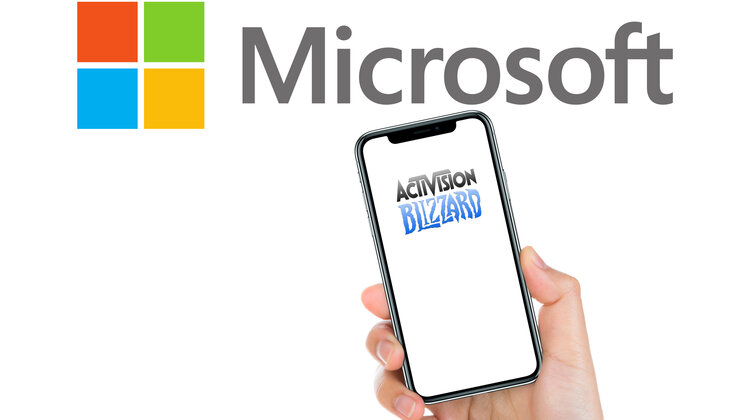03/03/2022
The Microsoft - Activision Blizzard acquisition from the perspective of European competition law: can the EU block a merger between two US companies?
One of the biggest announcements of the videogame industry was a breaking news all around the world recently: the Microsoft has announced on 18. January that it is to acquire game publisher Activision Blizzard for USD 68.7 billion. The transaction, which is not expected to be completed until 2023, will make Microsoft the third largest gaming company by revenue, overtaken by only China's Tencent and the big rival Sony.

But what will be the effects of this acquisition on the videogame market? Among other things, Microsoft will acquire popular titles such as Call of Duty and Word of Warcraft due to the transaction, both iconic Activision Blizzard brands that are currently available on Sony and therefore Playstation consoles. Therefore, Sony has a reason to be concerned if Microsoft would incorporate the acquired games portfolio into its exclusive content and make them available only on its Xbox platform, possibly on PC. Although Microsoft claims that it does not want to disadvantage players who are not members of the Xbox community, the competitive effects of the acquisition, the market contraction, could certainly be significant and are expected to be examined in detail by several competition authorities.
In the European Union, the European Commission is acting as a competition authority, and the merger rules are set out in Regulation (EC) No 139/2004 on the control of concentrations between undertakings. Accordingly, any transaction falling within the scope of the Regulation must be reported to the Commission prior to its implementation and will be examined by the competition authority for compatibility with the common market. In order to fall within the scope of the Regulation, two conjunctive conditions must be fulfilled; first, the reported transaction must fall within the definition of a concentration under the Regulation secondly, the turnover of the undertakings concerned must reach a certain level and thresholds, both worldwide and in the common market; namely, the combined aggregate worldwide turnover of all the undertakings concerned has to be more than EUR 5 billion and the aggregate community-wide turnover of each of at least two of the undertakings concerned has to be more than EUR 250 million

The Activision Blizzard acquisition certainly meets the above requirements as not only a literal merger or absorption constitutes as a concentration, but also the direct or indirect acquisition of control, therefore Microsoft's large-scale acquisition of shares falls into this category. There is also no doubt that the turnover limit will be exceeded by the two companies, as the Regulation requires that the amount to be taken into account as an aggregate turnover shall comprise the amounts derived by the undertakings concerned in the preceding financial year from the sale of products and the provision of services falling within the undertakings' ordinary activities after deduction of sales rebates and taxes directly related to turnover. With Microsoft's revenue for the previous financial year at over USD 168 billion and Activision Blizzard's at USD 8 billion, it is clear without looking closely at the European market that both the total worldwide turnover and the common market revenue of the individual companies are likely to reach the threshold of the regulation.
One might legitimately ask: can a European institution really put a stop to an agreement between two US-based companies? The answer, in short and in theory, is yes. If the Commission finds during its preliminary examination that the reported concentration falls within the scope of the merger regulation and raises serious doubts as to its compatibility with the common market, it shall decide to initiate proceedings, which may lead to a decision declaring that the acquisition incompatible with the common market or allows it only under certain conditions.
Microsoft was forced to make some serious commitments not so long ago when it acquired LinkedIn, and remarkably the commitments 'expired' in December last year, barely a month before the new acquisition was announced. Here, it can be assumed too, that Microsoft is preparing for a longer negotiation process and has wisely set a reasonably distant date for the merger.
Microsoft's transaction is also interesting because, it is more of a vertical merger in its main features though (i.e. the two companies operate at different levels of the supply chain), it also represents a synthesis of platforms, as by the acquisition of Activision Blizzard, Microsoft will receive a monthly 'player portfolio' of 390 million. Although in traditional cases vertical mergers are subject to a more favourable regulatory treatment, in case of gigantic entities of the internet the negative impact on competition may be show up differently and with different weights. It is not a coincidence that the US competition authority has already announced that it will inspect the acquisition and the European Commission is presumably not waiving certain commitments. The question is whether these seemingly unavoidable commitments will be able to slow down the rise of the suddenly fashionable 'metaverse' - at least until we understand its functioning and role.
Author: Dr. Dániel Balázs
